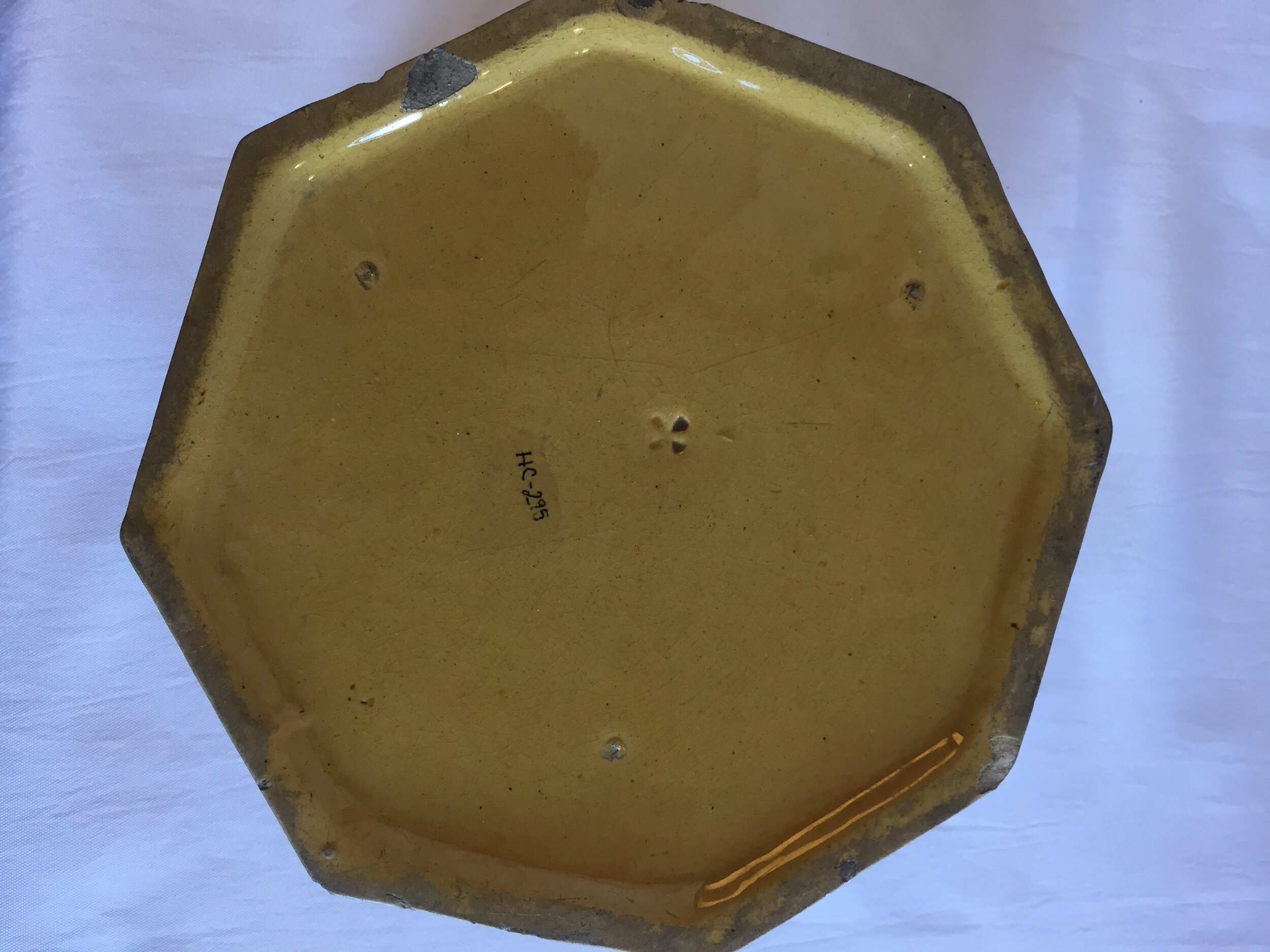James Bennett
A portrait by Ivan Hoon of James Bennett, from the collection of the Museum of Ceramics.
This dog was made from molds once used in the Bennett pottery.
James Bennett, the fourth of eight children, was born in 1812 in Derbyshire England. At the age of 23 he immigrated to the US and found work in a New York pottery. Bennett married Jane Milnor Stevenson, another English immigrant, in 1835. The Bennetts moved to Troy Indiana where James joined James Clewes in a fledgling pottery. By 1839, his partner had moved on and Bennett was once again seeking a home where he could continue his trade. Having heard that East Liverpool had suitable clay for making yellow ware, Bennett came to the area, obtained financing and set up shop. He drew his first kiln of ware in 1840. Foreseeing growth, Bennett sent for his younger brothers, Daniel, Edwin, and William, and the “Bennett Brothers Pottery” was in operation.
Bennett’s short-lived East Liverpool pottery (it moved to Pittsburgh in 1844) proved to be a success, but more importantly, it began a migration of English potters to the East Liverpool area. Bennett’s single kiln pottery marked the birth of a pottery dynasty that earned the town such accolades as Ceramic City, Crockery City, and the Pottery Capital of the Nation.
For more information on James Bennett, see an article by Timothy Brookes, East Liverpool Historical Society at http://www.eastliverpoolhistoricalsociety.org/bennet.htm
This badly damaged spittoon is made of the yellow clay that was abundantly available in the East Liverpool area. It was made in a mold, ca. 1840.
This is the bottom of the spittoon pictured above. It bears a small impressed mark that has been attributed to the James Bennett pottery.



